Sound: 









Value: 









(Read about our ratings)
Measurements can be found by clicking this link.
Since 2012, when AudioQuest introduced their DragonFly portable USB DAC and, in the process, created a new type of audio product, everyone else has been playing catch-up. Even Monoprice, purveyor of high-value, no-frills audio gear, has gotten in the game. Now another well-regarded cable company, Clarus Cable, is directly challenging AudioQuest’s current flagship DAC, the DragonFly Cobalt. Clarus introduced the Coda in December 2020, and proclaim it as the finest portable USB DAC now available.
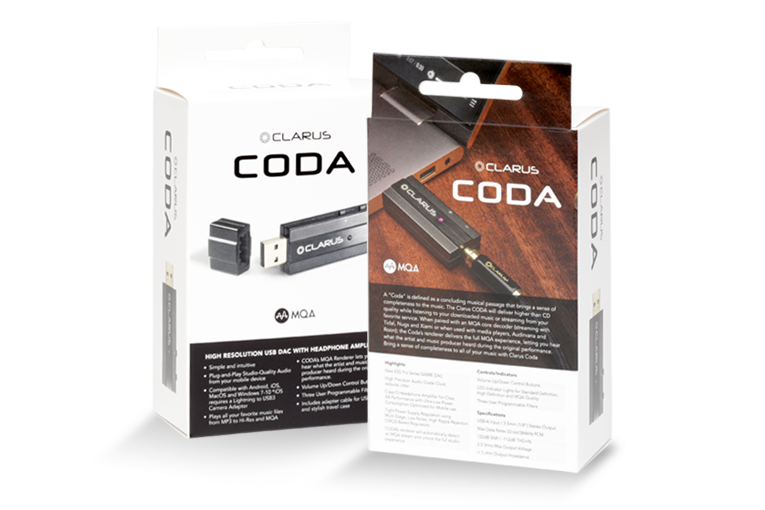
Instead of one of the ESS Technology mobile chips used in most competing USB DACs, including AudioQuest’s, the Coda has an ESS Professional Series DAC chip. Clarus says little about their headphone amplifier, other than that it runs in class-G, a more efficient form of class-AB that draws only as much voltage as it needs to supply the output. Besides rendering MQA signals, the Coda can also handle higher sample rates than its competitors, which tend to top out at 24-bit/96kHz PCM compared to the Coda’s 24/352.8 and DSD over PCM (DoP) 128 (no native DSD). It’s a bit strange that the Coda will decode 352.8kHz but not 384kHz signals—not that there’s much out there above 24/192, but still, it’s odd. Perhaps 384kHz will be offered in a firmware update—Clarus can update the Coda’s firmware via the Internet.
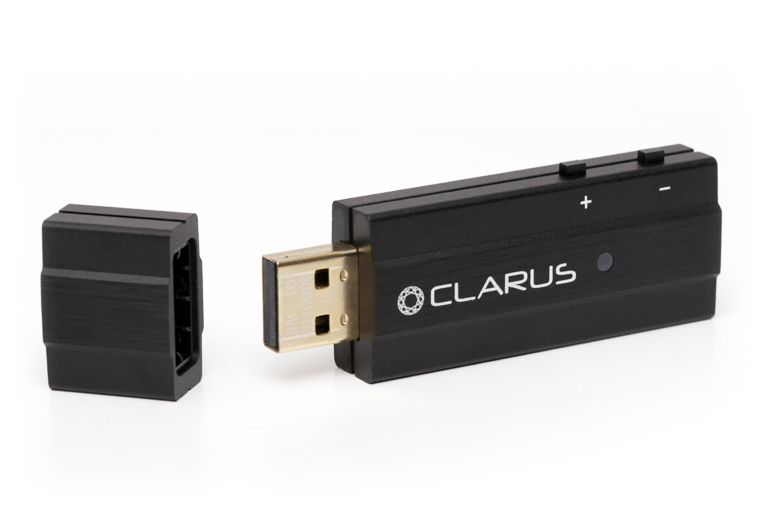
The Coda doesn’t look as flashy as the DragonFlys, or as utilitarian as the Monoprice models. Its no-nonsense, all-business design makes it look and feel as if it could be run over with a truck and still work fine. I’m not suggesting that you actually try that, but it has a nice weighty feel that I often associate with quality. The only downside of its 0.8 ounce (24gm) was that it occasionally sagged a bit in the USB slot with headphones plugged in. But that never affected its operation—it even worked when used as a line-level DAC (its maximum output is 2.0V, which is line level), with the caveats outlined below. On paper, Clarus has produced the most feature-rich portable USB DAC I’ve seen. But the proof was in the listening.
In the box
The Clarus Coda comes in a retail box, inside which is another box that holds the Coda’s case—a satin-black, zippered clamshell that’s stiff but not hard, with a bit of give. Inside the case are the Coda and an adapter cable (female USB-A to male USB-C), both held in place with cargo netting. This leaves room in the case’s other half for another accessory, such as a 1/8ʺ-to-1/4ʺ adapter. There are also a matching metal cap for the Coda’s USB-A blade, and the Operations Manual.
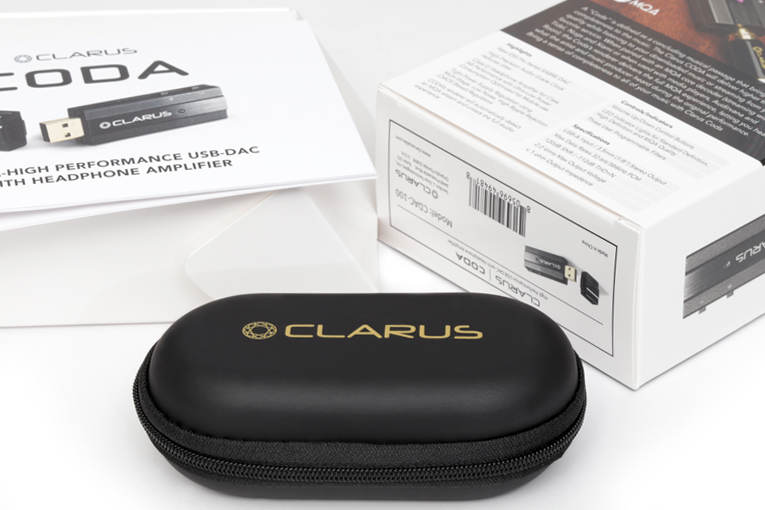
The Coda itself is a bar of metal measuring 2.5ʺL (with cap) x 0.9ʺW x 0.4ʺD, finished in attractive matte black, with its USB-A connector at one end and a 3.5mm jack on the other end. Running the length of the Coda on both sides is a central raised section—on the front, this bears the Clarus logo and a single status LED. Tiny rectangular buttons labeled “+” and “-” stick up from the top edge, for adjusting the volume and selecting the digital filter. Nothing about it feels cheap.
Use
The Coda was easy to use. I plugged it into my desktop computer, and after a little behind-the-scenes magic as the driver was automatically downloaded and installed, the Coda was up and running with its minimum-phase, slow-rolloff filter preselected. Switching to one of the two other filters available—linear-phase fast-rolloff or hybrid fast rolloff—is simple: Hold down the “+” button for five seconds and release. The LED’s color changes to that of the new filter: green (minimum phase), blue (linear phase), or magenta (hybrid). The “-” button can be used to cycle through the filters. Press “+” again and Bob’s your uncle. To use a 1/4ʺ headphone plug, adapters are cheap and easily found.
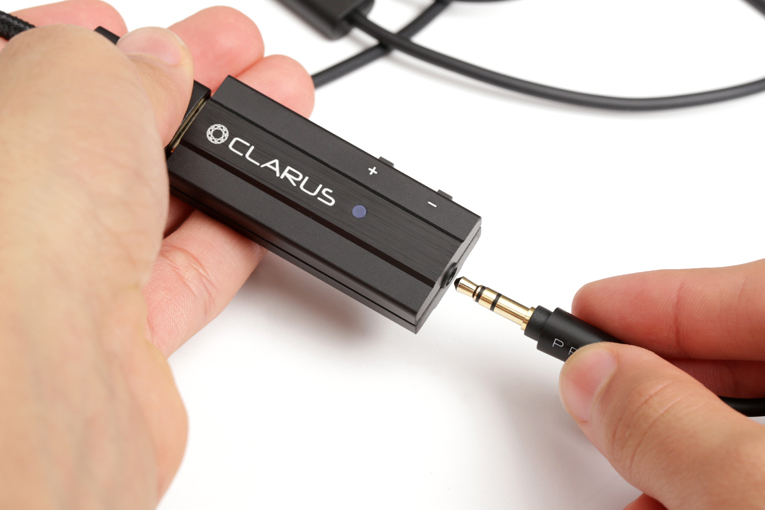
I also connected the Coda to my desktop headphone amp’s line input using a 1/8ʺ-to-dual-RCA adapter from RadioShack. The only hiccup: the Coda’s volume level needs to be set in the 75-80 range to avoid running out of steam.
Sound
The first track I listened to was one I’d recorded and mixed in the 1990s—not the fully mastered version that was eventually released, but my original mix. As you might guess, I’m extremely familiar with this track and how it should sound. While I listened to the full 16-bit/44.1kHz version, I’ve also uploaded it to YouTube. Both the name of this party band of the ’90s—they never really went anywhere—and some of this song’s lyrics might be offensive to some. To my ears, the minimum-phase slow-rolloff filter had not only the smoothest, most pleasurable sound, but was also the most accurate of the Coda’s three filter options. Through my Audio-Technica ATH-M50x headphones the bass was much smoother and less lumpy—still boosted, but the lumpiness was gone. The treble was smooth and extended, and the mids didn’t call attention to themselves.
I switched to the linear-phase fast-rolloff filter. Talk about a 180° difference. Now the sound was as if the music had been screen-printed on an old, scratched piece of sheet metal left out to bake a few years in the Central Texas sun. The highs were etched and pale, the midrange hard, the bass lumpy and weak. Everything was faded. About halfway through the song I knew that this filter, like broccoli, was not for me. Just as some folks genuinely like broccoli, some prefer linear-phase filters, but I am definitely not one of them. The third filter, a hybrid filter with fast rolloff, was much better than the linear-phase. The sound was more vibrant, maybe even a little hyped. There was still some etching in the treble and some lumpiness in the bass, but the midrange was much better. Compared to the linear-phase filter, the hybrid was like a high-quality four-color print on glossy card stock—not quite real, but still a pleasure to listen to. The minimum-phase slow-rolloff filter was more like some weird hologram painting on black velvet: smooth and comparatively three-dimensional. I did all my critical listening with this filter.
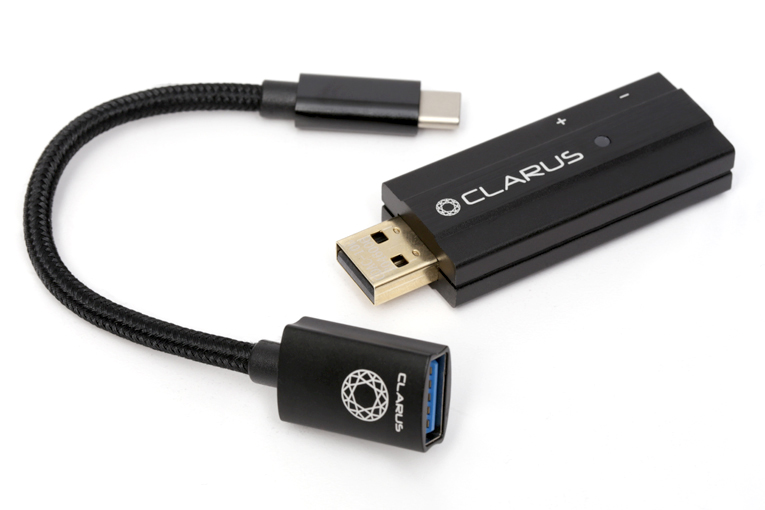
I then began comparing the sound of the Coda with that of my desktop reference system: a Schiit Audio Asgard 3 headphone amplifier with Schiit’s Modi Multibit DAC driving HiFiMan HE-500 headphones. Though the HE-500s are very inefficient, the Coda was able to drive them to somewhat satisfying levels. I also listened through my Audio-Technica ATH-M50x headphones, a much better match for the Coda’s headphone amp as well as for using it on the go. I’ll focus on differences not directly related to the Asgard’s overwhelming advantage of 3W output.
The Modi Multibit has a slight midbass emphasis that tended to give instruments and voices a bit more body than they had through the Coda. Most of my comparative listening was done without MQA, as the Modi doesn’t render MQA. With my ATH-M50x headphones I heard no difference in dynamics, but the HE-500s were a different story. Their inefficiency revealed an aspect of the Coda’s headphone amp that most users will probably never come across: how it behaves when it runs out of power. Quite well, it turned out. Instead of trying to get louder and blasting out all sorts of nasty harmonics while clipping, the Coda essentially shelved the bass down slightly, then just wouldn’t play any louder. “I think that’s loud enough, Sir,” it seemed to politely say.
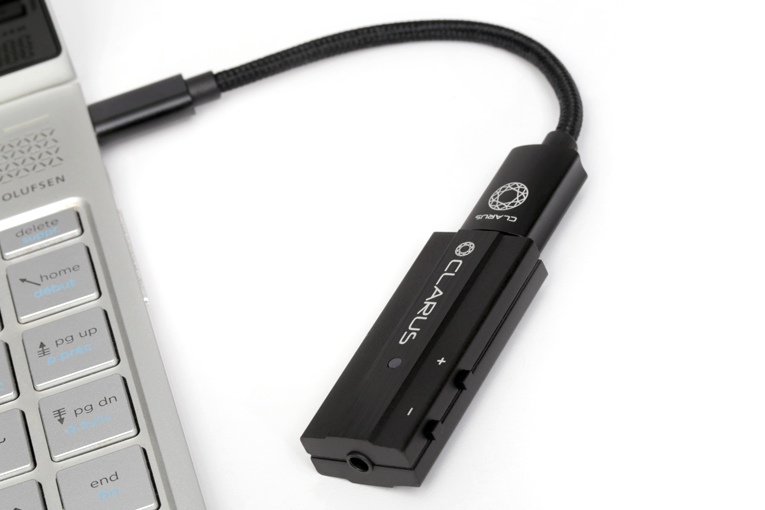
Up first was the Dave Brubeck Quartet’s Time Out, specifically “Take Five” (16/44.1 FLAC, Columbia/Tidal). Through my reference system, Paul Desmond’s alto saxophone sounded slightly more breathy, the spit a bit more audible. His sax had a bit more body through the Schiits than through the Coda; through the Coda, it had a cleaner tone with fewer harmonics. The edit after the sax solo was very slightly more obvious with the Schiit, and the reverb during Joe Morello’s drum solo—it sounds as if a plate reverb was used; basically, a sheet of metal suspended in a box with transducers attached—was more restricted to the center of the soundstage through the Schiits than through the Coda, through which the reverb was more diffuse.
“Hold the Line,” from Toto’s Toto (16/44.1 FLAC, Columbia/Tidal), provided great insight. The two systems sounded much more similar with this rock recording than with Brubeck’s acoustic jazz, but there were differences. Steve Lukather’s guitar had a bit more texture with the Schiit system, most notably in the distortion, which was a bit more dulled with the Coda—like a saw blade that needs to be sharpened or replaced. The treble was also a bit smoother in general, without sounding rolled off. Overall, the Coda sounded a touch flatter in texture than the Schiits but still well fleshed out. This was true with the A-T ATH-M50x headphones as well.
Things evened up a bit with “Can’t Feel My Face,” from The Weeknd’s Beauty Behind the Madness (24/96 MQA, Republic/Tidal). This MQA track gave the Coda a leg up with dynamics: 24 vs. 16 bits. The only thing notable with this track, which owes a lot to Michael Jackson’s Thriller, was that its treble was less smooth through the Coda. This wasn’t universal with MQA-encoded material, so it was likely due to how compressed and loud this track is. The copious bass was a bit smoother with the Coda, and both systems did a good job with all the effects on the vocal parts. The systems sounded very similar with this track and with modern pop in general.
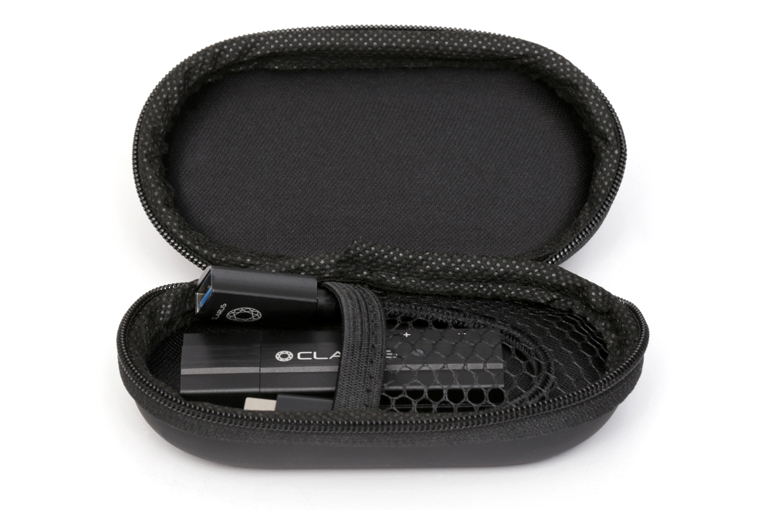
Other than the obvious difference in amplifier power, the sound of the Coda with the minimum-phase filter was far more similar to than different from listening to my Schiit Modi Multibit. This was especially true using efficient headphones, where the difference in power didn’t matter. The Coda had a smoother, flatter frequency response; its bass quality, if not quantity, was flatter and sounded more accurate than does the Modi Multibit. Connected directly to the Schiit Asgard 3 amp with a Y-adapter, the Coda continued to display these characteristics in relation to the Modi. Texturally, the Coda’s sound was satiny, the Modi’s woody. The Schiit produced a deeper soundstage, with instruments and voices surrounded by a bit more space—but the Coda was better at separating the layers of sound in a mix.
With now a better idea of the Coda’s sound in comparison to what I’m used to, I began exploring the sound of the Coda on its own. I listened through my HiFiMan HE-500 and Audio-Technica ATH-M50x headphones. Also, using a generic 1/8ʺ-to-1/4ʺ TRS adapter, I connected the Coda, via a RadioShack 1/8ʺ-to-dual-RCA connector, to the Schiit Asgard 3 amplifier, so that I could evaluate the Coda’s sound when I used it only as a DAC (though still through the Coda’s class-G amp circuitry).
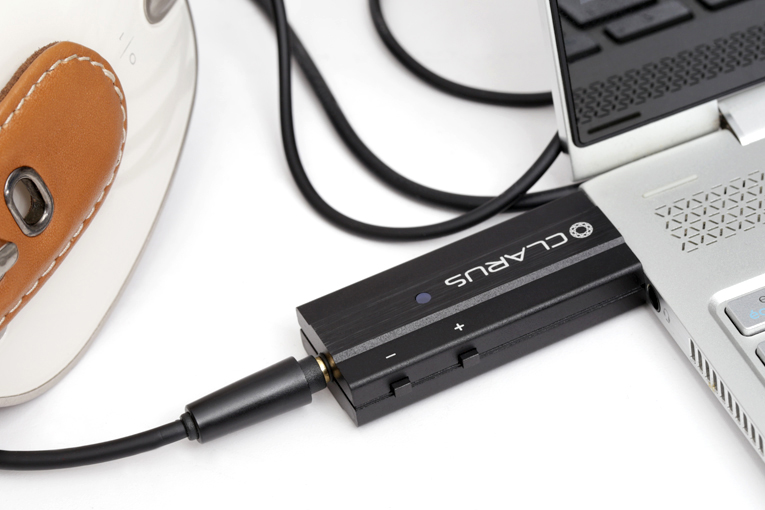
I began with one of my favorite albums for evaluating audio gear: Laurie Anderson’s Mister Heartbreak (24/96 MQA stream, Warner Bros./Tidal). Not only is this album very well recorded and mixed, I just plain enjoy it. Listening to the MQA version was interesting on its own, as I usually listen to the CD (Warner Bros. 25077-2). The first thing apparent in “Gravity’s Angel,” and the MQA mastering of the album overall, was that there was more space around instruments, and the background was a lot “blacker” than on the CD. This track begins with Anderson and David Van Tiegham playing a bell and a sheet of plywood in metronomic unison, but with feeling. Through the Coda they were where I expect them to be on the soundstage: respectively, just left of center and to the right. The feeling comes primarily from their changes in dynamics, which the Coda presented with good rhythm and pace. This quality of rhythmic drive was a constant in my time listening to the Coda.
The Coda’s retrieval of low-level sounds was also quite good. In “Excellent Birds,” a version of which also appears on Peter Gabriel’s So, the sound was a bit flatter than I’m used to, and I didn’t get quite the sense of birds in a forest that I do through my main system: a restored Tandberg 3012 integrated amplifier with an excellent headphone amp, not used for this review. This is a tough test, and the Schiit combo can’t pass it either, with either the Tidal MQA or the CD version.
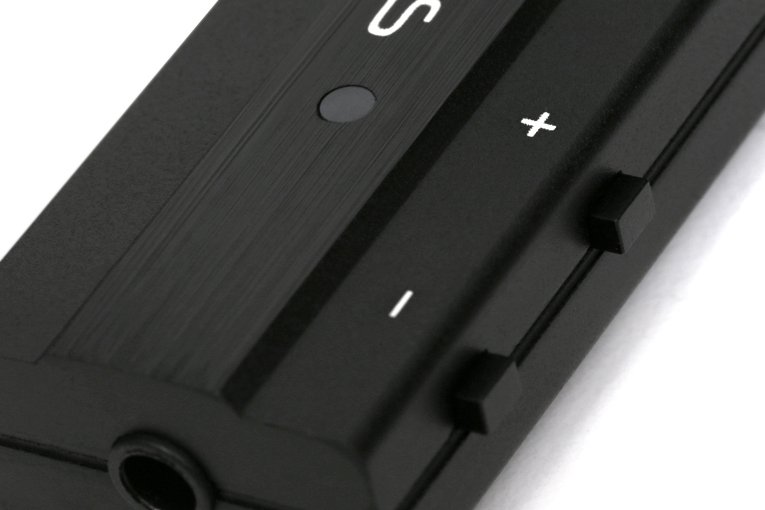
When I played “Trip Like I Do,” from The Crystal Method’s Vegas (16/44.1 FLAC, Tiny e/Tidal), the Coda was impressive. The intro has a driving, repeating motif that pulses on the downbeat, and the Coda’s class-G amp played it with almost relentless drive. Some of that drive was diminished when I ran the Coda into the line-level input of my Asgard 3, but it was still there. This was a very musical combo of DAC and headphone amp.
I spent a lot of time listening to Michael Jackson’s unstoppable beast, Thriller (16/44.1 FLAC, Epic/Tidal), and the Coda did not disappoint in serving up the ear candy. The voices on this album, masterfully recorded and meticulously mixed by the late Bruce Swedien, are revealed layer by layer like an onion being peeled. The Coda was even able to show me the few places when Swedien applied just a smidge too much compression to Jackson’s vocal, the air in his voice dropping out briefly as the dynamics hit a plateau (I experience this as the “ear suck” of a change in atmospheric pressure). This was most noticeable in “Wanna Be Startin’ Somethin’.”
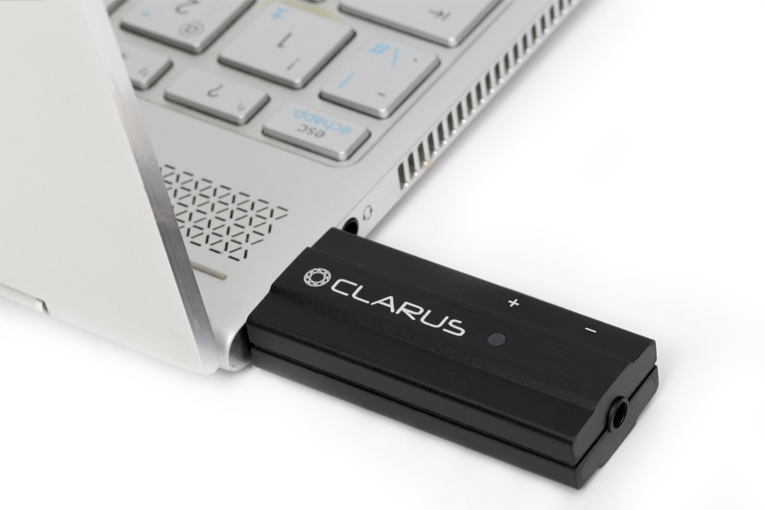
As I listened to “The Girl Is Mine,” a duet with Paul McCartney, the difference in choice of mike was clear. Jackson sounds as if he’s using a dynamic mike (Swedien often used a Shure SM7 on Jackson’s voice, and this sounds like one of those times), while McCartney’s voice has the more open and airy sound of a good, large-diaphragm condenser mike. One notable difference between Jackson’s singing as reproduced by the Schiit and Coda DACs was that, while the Coda was able to reveal more about the vocals and their layering in the mix, the lead vocal was slightly recessed and had less weight than it did through the Modi Multibit.
Competition
The most obvious competition for the Clarus Coda is AudioQuest’s DragonFly Cobalt. Almost identically priced ($300 for the Coda, a nickel less for the Cobalt), they have similar but not identical feature sets. Beyond its distinctly different industrial design, the Coda’s high-grade ESS Sabre Professional Series DAC chip offers three choices of digital filter (linear-phase fast-rolloff, minimum-phase slow-rolloff, and a hybrid filter with fast rolloff) instead of only a minimum-phase slow-rolloff filter in the Cobalt. It’s good to have choices that meaningfully affect the sound, and these filters do that. Like the DragonFly, the Coda has an LED that indicates the input resolution: up to 48kHz (blue), over 48kHz (green), and MQA (magenta). The output of the Coda’s class-G amplifier is specified as 2.0V RMS. Class-G is a more efficient form of class-AB amplification, which makes it more suitable for mobile use than plain ol’ class-AB. (The DragonFly Cobalt’s specified output voltage is a bit higher, at 2.1V RMS.) The Coda offers decoding of up to 24/352.8 PCM and DSD over PCM up to DoP128, compared to only 24/96 PCM and below for the Cobalt. Both render MQA signals. But I haven’t heard the AudioQuest DAC, so I can’t comment on its sound.
Conclusion
I thoroughly enjoyed my time with Clarus Cable’s Coda DAC-headphone amp. Its minimum-phase slow-rolloff filter presented a detailed and accurate translation of bits to music. For those who prefer a linear-phase digital filter, Coda’s got you covered, and the hybrid filter combines the best of both with only a little broccoli. The Coda performed flawlessly in my time with it, working with my fairly new Dell desktop PC as well as with my ancient Samsung Galaxy S4 Activ smartphone. It also played well with Pro Tools, a professional digital audio workstation (DAW) using an Audio Stream Input/Output (ASIO) driver (ASIO4ALL in my case) in Windows 10. Not only is this DAC great for taking music on the go; its accuracy, and the fact that it works with professional DAW software, makes it also great for making music on the go.
. . . Mark Phillips
Associated Equipment
- Headphone amplifier: Schiit Audio Asgard 3
- Headphones: Audio-Technica ATH-M50x, HiFiMan HE-500
- Digital-to-analog converter: Schiit Audio Modi Multibit
- Computer: Dell Alienware Aurora Ryzen Edition running Windows 10
- Mobile device: Samsung Galaxy S4 Activ smartphone
- Source: Tidal for streaming, iTunes for locally stored files
Clarus Cable Coda Portable USB DAC
Price: $300 USD.
Warranty: One year from date of purchase from an authorized dealer.
Clarus Cable
6448 Pinecastle Boulevard, Suite 101
Orlando, FL 32809
Phone: (888) 554-2494, (407) 855-0497
E-mail:
Website: www.claruscable.com







